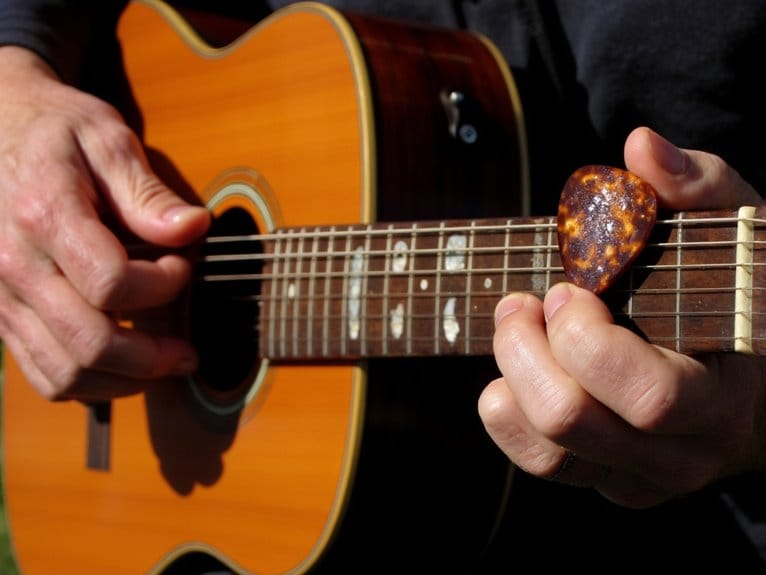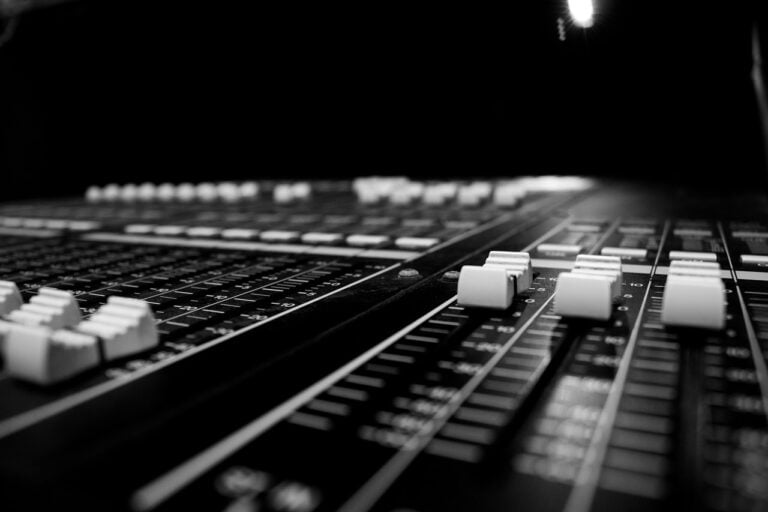Is a French Horn Loud?
The French horn is a dynamic instrument capable of producing a wide range of volumes, from delicate pianissimos to bold fortissimos, with a typical dynamic range spanning from around 60 decibels to over 100 decibels. While its loudness can vary depending on the skill of the player and the specific musical context, the instrument is generally capable of producing sounds that can cut through an ensemble or blend with other instruments. To fully appreciate the nuances of the French horn's dynamic range, one must consider the intricate interplay between embouchure, air stream, and valve manipulation – and the mastery of these elements can reveal a rich tapestry of tone and expression.
We are supported by our audience. When you purchase through links on our site, we may earn an affiliate commission, at no extra cost for you. Learn more.
The Anatomy of Sound Production
The intricate mechanics of sound production on the French horn involve a delicate interplay between the player's embouchure, air stream, and valve manipulation, all of which converge to shape the instrument's distinctive sonic profile. The embouchure, comprising the lips, facial muscles, and teeth, forms a precise aperture that directs the air stream into the instrument. Lip vibrations, facilitated by the player's precise formation of the embouchure, generate the initial sound wave. As the air stream traverses the vocal tract, it is shaped and refined by the instrument's tubing and valves, producing a rich, mellow sound. This complex process requires meticulous control and coordination, making the French horn a true test of technical skill and musicality.
Decibel Levels in Performance
In a typical orchestral setting, French horn players often navigate a dynamic range spanning from pianissimo whispers of around 60 decibels to fortissimo blasts exceeding 100 decibels, demanding precise control over their instrument's acoustic output. This dynamic range is vital in performance acoustics, as it allows the horn to blend with other instruments or cut through the ensemble. A skilled player must balance tone, pitch, and volume to produce a cohesive sound. Even subtle variations in embouchure, air pressure, and hand position can markedly impact the decibel level, making the French horn a highly expressive yet technically demanding instrument. By mastering these nuances, horn players can release a wide range of tonal colors and textures, adding depth and complexity to the overall performance.
Comparing Horn Dynamics to Others
Across the orchestral spectrum, a striking dichotomy emerges when comparing the dynamic range of the French horn to that of its brass counterparts, with the trumpet capable of producing piercing blasts exceeding 120 decibels and the trombone often relegated to a more subdued, sonorous role. In contrast, the French horn typically operates within a more modest dynamic range, often serving as a melodic voice within horn sections. While capable of producing bold, declarative statements, the horn's dynamic range is generally more restrained, typically spanning from pianissimo to mezzo-forte. This unique dynamic profile allows the horn to blend seamlessly with other instruments, adding warmth and depth to the overall orchestral texture.
The Role of Embouchure and Air
By modulating embouchure and air support, French horn players can subtly shade their tone, exploiting the instrument's dynamic range to convey nuance and expression. A well-crafted embouchure, characterized by a relaxed, rounded lip formation and precise aperture control, allows for a rich, resonant sound. Embouchure tips include maintaining a consistent mouthpiece placement, avoiding excessive tension, and developing a strong, flexible lip. Air pressure secrets involve manipulating breath control to produce varying degrees of intensity, from the softest pianissimos to the loudest fortissimos. By mastering these techniques, horn players can harness the instrument's full dynamic potential, creating a sonic landscape of breathtaking contrast and emotional depth.
Mute and Unmute Volume Differences
Muted and unmuted settings on the French horn produce stark volume disparities, with mutes capable of reducing overall loudness by as much as 20 decibels. This significant difference is due to the mute's ability to alter the instrument's acoustic properties, affecting the sound wave's resonance and propagation. The nuances of mute design, such as material, shape, and placement, further influence the degree of volume reduction. In contrast, unmuted settings allow for unobstructed sound waves, resulting in a louder, more resonant tone. The volume contrasts between muted and unmuted settings enable French horn players to achieve a range of dynamic expressions, adding depth and complexity to their performances. By mastering these volume differences, musicians can release the full sonic potential of the instrument.
Sound Projection in Various Settings
French horn players must consider the acoustic properties of various performance settings to maximize sound projection, as the instrument's loudness and tone quality can be substantially affected by factors such as room size, surface materials, and audience proximity. In orchestral settings, achieving ideal orchestral balance requires adjusting tone and volume to blend with other instruments. Conversely, in chamber music settings, the horn's sound must be nuanced to maintain Chamber intimacy. For instance, a smaller, more reverberant space may demand a softer, more delicate approach, while a larger, drier space may require a more forceful, projecting sound. By adapting to these acoustic variables, horn players can guarantee their instrument's unique voice is heard and appreciated in any setting.






